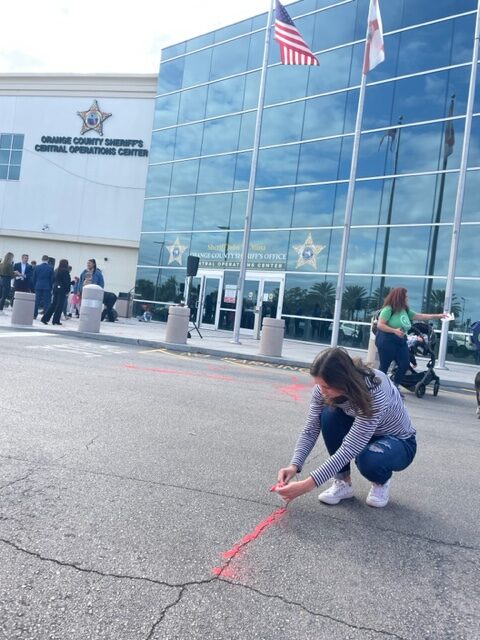
Let’s Not Ignore the Needs of Human Trafficking Victims
As we celebrate Human Trafficking Awareness Month once again and #WearBlueDay that took place on Jan. 11, I reflect on the principle of Think Globally, Act Locally.
For the past four years, I have worked as coordinator for the Diocese of Orlando Human Trafficking Task Force and now I am entering new territory as I transition from addressing human trafficking in Central Florida to a national level as the new Director of Communications for the U.S. Catholic Sisters Against Human Trafficking. My role is very different, but the goals are still very similar – raise awareness of this issue, prevent trafficking from happening in the first place and have people take a look at how we play a role in human trafficking, specifically labor exploitation and our purchasing choices.
Aside from a national level focus, I still volunteer for this cause locally from participating in A21’s Walk for Freedom in October to the Central Florida Human Trafficking Task Force’s Red Sand Event in Orlando , where volunteers pour red sand into the cracks of the sidewalk to raise awareness by posting pictures on social media. The sand represents millions of victims who fall through the cracks due to lack of identification, services, law enforcement etc. There are an estimated 50 million people in human trafficking around the world if you include forced marriage.
Millions of people fall through the cracks with less than 1% of people in the United States who get the services they need to get out of the life. During a Christmas party, I recently spoke with my husband’s aunt, a retired emergency room nurse, who recognized the red flags of human trafficking: A 15-year-old girl with an older woman who spoke for her and had medical conditions that were consistent with someone who was experiencing sex trafficking. Yet when my husband’s aunt went to the doctor on duty with her concerns, his response was, “I don’t have time for that.”
My immediate response upon hearing this story was anger, not toward the trafficker but at this doctor, who is supposed to be committed to the care of others and saving lives. Yet, he was too busy to save the life of a 15-year-old girl. The average life span of a trafficking victim is seven years in the life because if they are not rescued or identified then they may die of a drug overdose, from medical complications or are killed. My anger turned into sadness for this girl who slipped through the cracks of a system that was supposed to help her but failed.
Another example was recently relayed to me when I heard of human trafficking survivor who needed food services and was never connected to the local food pantry. This breaks my heart as the services for human trafficking survivors are what helps them stay out of “the life.” Without resources, they are left without options, hope and the necessities needed to live their lives free from their traffickers who can very easily exploit their vulnerabilities and find themselves right back in “the life.” Soon after, she went missing and was just one more victim who fell through the cracks.
Each of us has a responsibility when it comes to human trafficking, whether that’s to learn the signs to help identify victims, to change the way we purchase products or to use our voice to speak up and create awareness of this issue. There are so many ways we can help and make a difference whether it’s writing to your favorite companies or contacting your legislators for policies to protect survivors and prosecute the buyers and traffickers.
William Wilberforce, a famous abolitionist who was instrumental in abolishing the slave trade in England once said, “We can choose to look the other way, but never again can you say you did not know.”
You can learn more at sistersagainsttrafficking.org. Together, by doing our own part whether it’s volunteering, educating or using our purchasing power, we can help end modern-day slavery and the exploitation of our brothers and sisters.